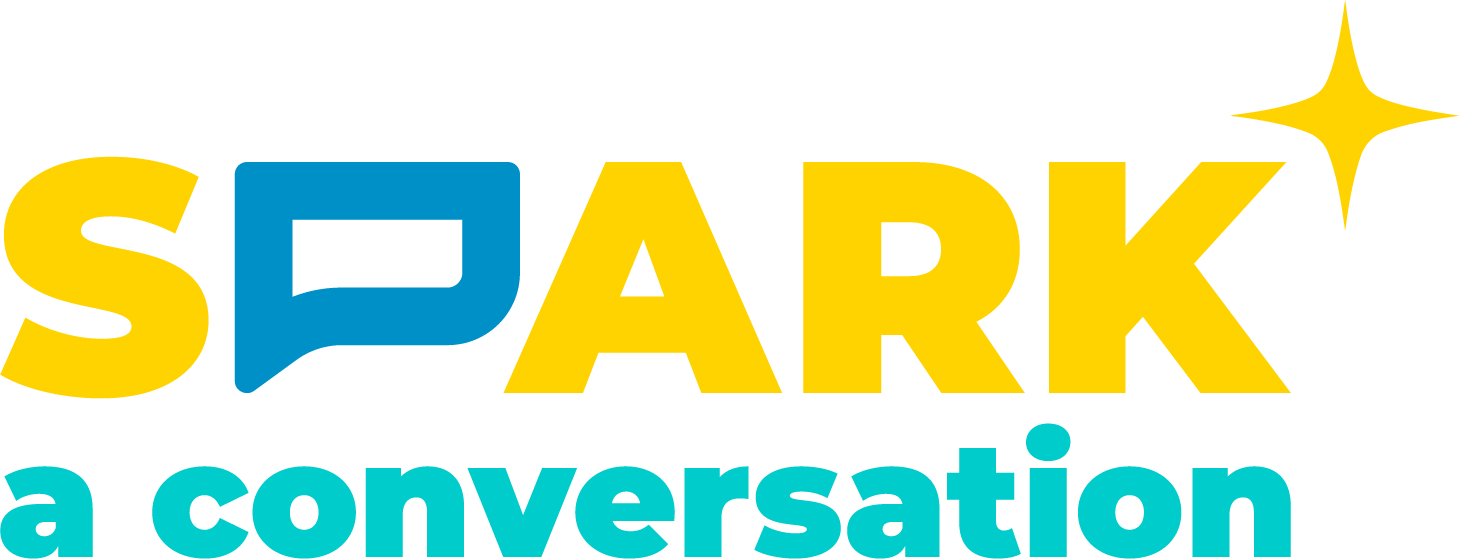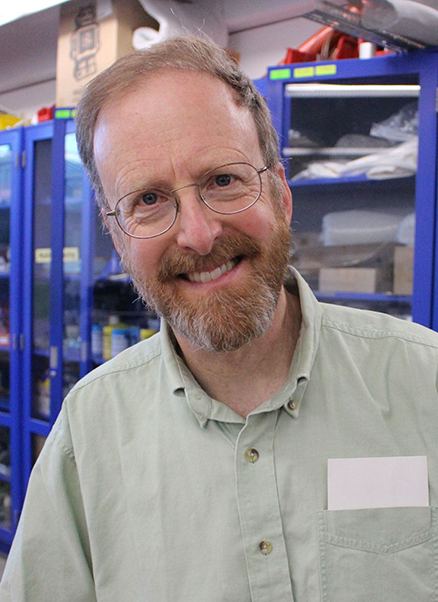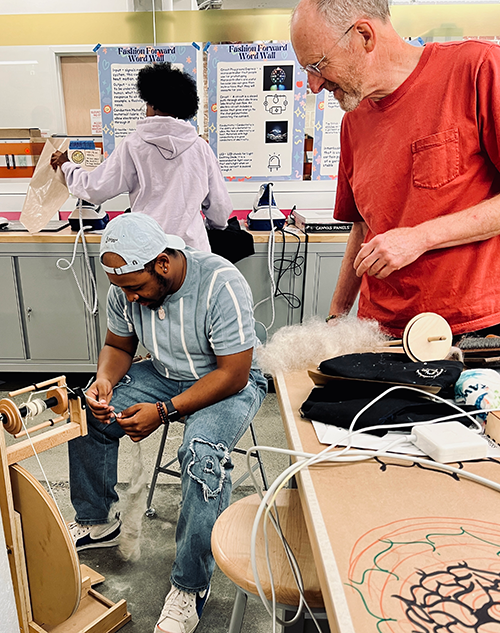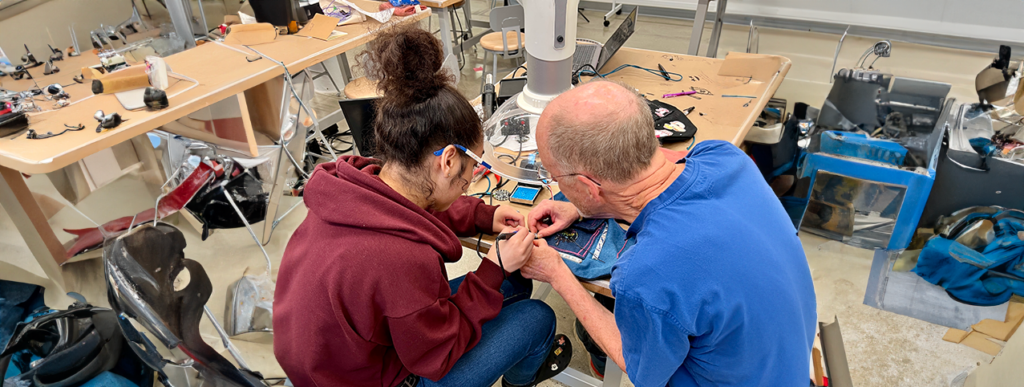
Experimental Physicist Robert Hart’s curiosity about music and how violins work led him to pour glitter on plates. And his friend’s curiosity about how a marble would move if you drop it onto a saddle led Hart to program a 3D printer to create plastic saddles to test his friend’s theories. Curiosity about the ways things move and sound lead Hart to use electronics, programming, and other tools to build and experiment with many different things.
What makes you curious — what would you like to know more about?
When you hear the word “saddle,” you probably think of horses…or perhaps shoes. Mathematically, a saddle is a three-dimensional shape which curves in a positive direction (think of the graph of a line with a positive slope) … but if you turn it 90 degrees, it curves in a negative direction. If you’re familiar with three-dimensional graphs or are feeling mathematically adventuresome, check out this video about saddle points. Or just picture a horse’s saddle: it curves up in front of and behind you and it curves down towards your legs.
When the COVID-19 pandemic and his recent retirement from teaching at Harvard University gave Experimental Physicist Robert Hart some extra time, he 3D-printed a saddle. Louis DesLauriers, a friend of his at the school, was interested in taking the saddle of a certain shape, rotating it at different speeds, dropping a marble onto it, and timing how long it took for the marble to get thrown out of the saddle. DesLauriers’s theory was that the time it took the marble to get tossed out was related to the frequency of rotation of the saddle (how often it was turned around in a given amount of time).

It was the winter of 2021 and Hart was home a good deal of the time, thanks to the pandemic. “I was spinning saddles and taking lots of data. At each frequency, I would drop a marble and use my phone to time the number of seconds it would take the marble to drop out.” He printed these saddles in PLA plastic (polylactic acid, which is made from plants). Equations in the form ax2 – by2=z (three-dimensional quadratic equations) and the programming language Python, which Hart had started learning, went into the saddles’ design.
At one frequency, the marble might sit in the saddle for two seconds before rolling out. And at another it might stay for as much as 20 seconds. Very small differences in frequency caused this change (from 1 second to 1.05 seconds).
In the autumn of 2023, the same friend worked with a physics major at the college. The student spent a semester recreating the experiment Hart had done in his garage … but using liquid nitrogen instead of marbles. Drops of liquid nitrogen would float on the surface of the saddle. They behaved more like the mathematical model because they are closer to friction-less particles. Being a curious person, Hart gave that a try, too.
Rob’s father was a biologist who loved math and played a lot of cards with his son. “I remember doing number puzzles with him — playing and working with him gave me my early appreciation of math.” Rob and his dad played cribbage, gin rummy, and — once a year — chess, which they agreed was “too much work.”
“In my family … if you needed to do something like … repair your car or put a new electrical circuit in your house, you generally did that yourself.” This also applied to other types of work: “my mother could knit, sew, cook — she was very crafty.” Rob’s mom taught him to make jewelry and they sometimes took classes together. Mother and son both enjoyed metal-working, stone-cutting, and stone-setting. They cut semi-precious granites, agates, turquoise, jade and other stones and gave the jewelry they made to friends. “Five or 10 years ago, I ran into someone who was wearing a ring I had made as a kid back in Indiana.”
According to Hart, his mother — a college graduate and an expert cook and preserver of foods they grew on their farm — “could have been a good chemist but was … steered towards home economics.” During World War II, in the 1940s, she worked as a synthetic rubber technician. “Her exposure to science influenced me.”

In high school, Rob had a “really wonderful math teacher” who got him especially excited about math. As a sophomore, he had the opportunity to go from his rural town to a summer institute where he was surrounded by people with a passion for math and, like Rob and his father, love of number puzzles and games. This experience “opened my eyes to the possibility that there were more people out in the world than I had imagined who love math.” When he was ready to learn calculus, the principal of his school offered it to him as an independent study (because the school was not able to offer a calculus class).
Another influential high school mentor was the physics teacher Rob had as a junior, who draped aluminum foil over all of the windows in the classroom, leaving just one dot open to the sunlight. In other words, the teacher turned the whole room into a camera obscura. “You could see images of what was outside on the street on the walls upside-down and backwards.” That class “convinced me that I wanted to be a physics major.”
Like his mother before him, Hart loves to cook. Math comes into play in the kitchen: he converts from grams to ounces and back again in his head, knows that a tablespoon equals 15 milliliters (ml) and that a teaspoon is 5 ml. He wishes that he had learned more math in college, but not much was offered there. “When I came to graduate school I was not prepared to do quantum mechanics and the higher-level physics classes.” “In retrospect, I would have loved to have spent more time learning the math I needed to understand the physics better” — linear algebra, multivariable calculus, and differential equations.
After college, Hart had the opportunity to move to New Jersey to work as a technician at Bell Laboratories, “the top research institute in the world at the time.” At Bell, he experimented with laser light scattering, “shooting laser beams at various chemicals and measuring the light that was scattered off.” One color of light went in, “interacted with molecules in the matter,” and light emerged with a lower frequency. The different frequencies “tell you about vibrations in the molecules.”
Lasers had been invented in 1960. In the 1980s, when Hart was at Bell Labs, “anything to do with lasers was [still] very hot.” It was a time of many discoveries and Hart “got my first publication out of that.” He also worked with mentors who formed lasting impressions on him, including John G. Bergman. “From him I learned that science is something that you do with people. Going to lunch once in a while and drinking enough beer that you have to go home and not back to the lab is ok. Science is a really human thing.” Collaboration is key. Bergman was “not a model of ambition” but “a model of humanity.”

Perhaps Bergman influenced Hart to explore beyond the boundaries of a traditional academic career in experimental physics. In addition to his time at Harvard and teaching 6th-12th grades in an independent school, Hart worked for a Massachusetts company which creates medical devices. He helped design and build models for artificial hearts and tools for testing lead levels in children’s bones. His name is on a patent for rotary blood pumps.
And for years, Hart joined a group of researchers who met at Oberlin college to investigate the design of violins.
Having played keyboards and cello and double-majored in physics and music in college, “I’ve had an itch to make musical instruments all my life.” He worked with a violin-maker to build his first violin. And he helped the group that met at Oberlin each summer create a family of instruments similar to violins and study the properties that go into creating high-quality musical instruments.
The researchers observed the vibration of plates (the fronts of violin-like instruments). They wanted to know “whether the vibrations are related to the quality of the instrument” and measured their frequency by pouring glitter onto the vibrating plates, which were suspended above a loudspeaker. The glitter gathered in lines where the vibrations did not move the plates. To learn more about these types of experiments with sounds and vibrations, check out this video about Ernst Chladni’s work.
The arts beyond music also appeal to Hart, who worked with artist Kim Bernard to create a bouncing installation. They wound strips of rubber from bicycle inner tubes into balls of different masses, which they hung from 50 springs. These are connected to a bar which rotates a few degrees back and forth, thanks to a motor attached to it. “Balls in different positions will have large amplitudes at different times” — they take turns bouncing higher, thanks to “a program in the microcontroller that drives the motor.” Click on the words “a bouncing installation” to have a look at what Hart and Bernard created together.
More recently, Hart created the fabrication lab (a student maker space) at Harvard University and taught courses there in using technology to make just about anything. One form of technology he uses now is AI. Chat GPT helps him figure out how to “convert a string of bytes into an integer,” which helps him send information between machines. If Hart makes an error in his coding, Chat GPT will catch it and explain it to him. AI can be “good for learning because you can ask it basic questions that you might not want to ask a human.” Hart wonders how it will change learning in many fields, from statistics to physics to coding.
Do you love to design and build things? To learn about electronics? Hart suggests that you check out the companies Adafruit Industries and Sparkfun. “They both sell kits and devices at reasonable prices.”



